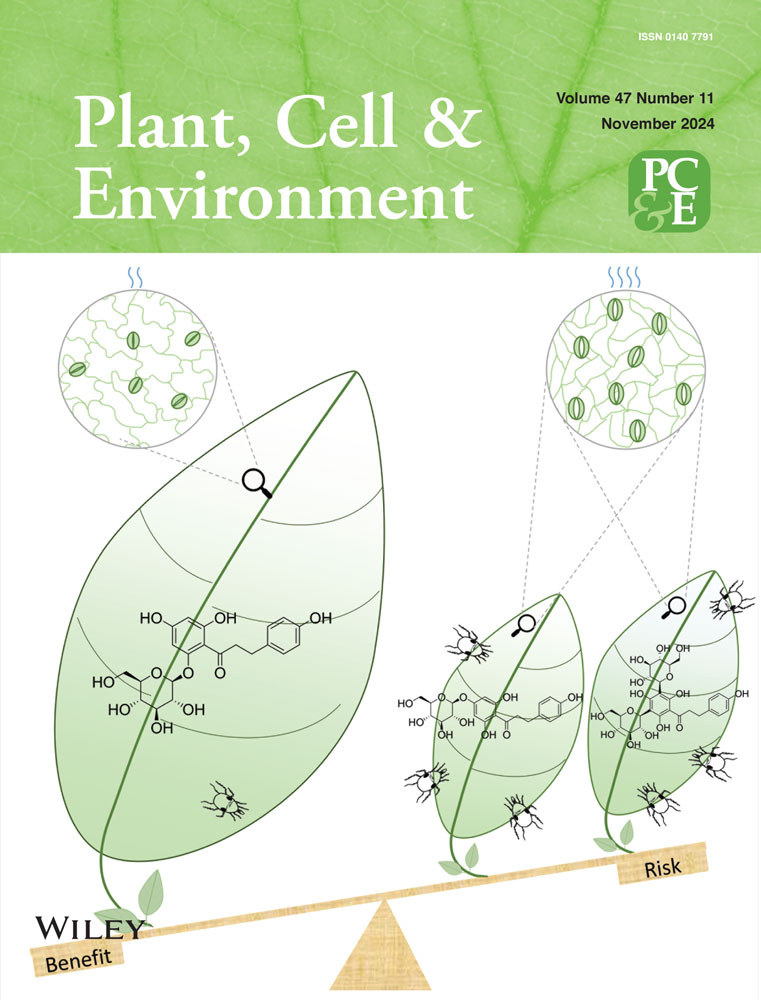Ver ítem
- xmlui.general.dspace_homeCentros Regionales y EEAsCentro Regional Buenos Aires NorteEEA San PedroArtículos científicosxmlui.ArtifactBrowser.ItemViewer.trail
- Inicio
- Centros Regionales y EEAs
- Centro Regional Buenos Aires Norte
- EEA San Pedro
- Artículos científicos
- Ver ítem
Integrated metabolomic, lipidomic and proteomic analysis define the metabolic changes occurring in curled areas in leaves with leaf peach curl disease
Resumen
Peach Leaf Curl Disease, caused by the fungus Taphrina deformans, is characterized by reddish hypertrophic and hyperplasic leaf areas. To comprehend the biochemical imbalances caused by the disease an integrated approach including metabolomics, lipidomics, proteomics and complementary biochemical techniques was undertaken. Symptomatic and asymptomatic areas were dissected from leaves with increasing extension of the disease. A differential metabolic
[ver mas...]
Peach Leaf Curl Disease, caused by the fungus Taphrina deformans, is characterized by reddish hypertrophic and hyperplasic leaf areas. To comprehend the biochemical imbalances caused by the disease an integrated approach including metabolomics, lipidomics, proteomics and complementary biochemical techniques was undertaken. Symptomatic and asymptomatic areas were dissected from leaves with increasing extension of the disease. A differential metabolic behaviour was identified in symptomatic areas with respect to either asymptomatic areas or healthy leaves. Symptomatic areas showed an altered chloroplastic functioning and composition which differs from the typical senescence process and includes decrease in the photosynthetic machinery, alteration in plastidic lipids, and decreased starch, carotenoid and chlorophyll biosynthesis. In symptomatic areas, alteration in redox-homeostasis proteins and in triacylglycerols content, peroxidation and double bond index were observed. Proteomic data revealed induction of host enzymes involved in auxin and jasmonate biosynthesis together with up-regulation of phenylpropanoid and mevalonate pathways and down-regulation of the plastidic methylerythritol phosphate route. Amino acid pools were affected, with up-regulation of proteins involved in asparagine synthesis. Overall, we conclude that curled areas exhibited a metabolic shift towards functioning as a sink tissue importing sugars and producing energy through fermentation and respiration and reductive power via the pentose phosphate route.
[Cerrar]

Autor
Novello, María Angelina;
Bustamante, Claudia Anabel;
Svetaz, Laura;
Goldy, Camila;
Valentini, Gabriel Hugo;
Drincovich, María Fabiana;
Brotman, Yadiv;
Fernie, Alisdair R.;
Lara, María Valeria;
Fuente
Plant, Cell & Environment : e15210 (October 2024)
Fecha
2024-10
Editorial
Wiley
ISSN
1365-3040
0140-7791
0140-7791
Documentos Relacionados
Formato
pdf
Tipo de documento
artículo
Proyectos
(ver más)
INTA/2019-PE-E6-I125-001, Mejoramiento genético, caracterización y uso de variabilidad con aplicación de herramientas biotecnológicas en cultivos frutales
INTA/2023-PE-L01-I105, Generación de conocimientos, tecnologías e innovaciones para una fruticultura sostenible adaptadas al riesgo ambiental y a la mecanización
Palabras Claves
Derechos de acceso
Restringido
 Excepto donde se diga explicitamente, este item se publica bajo la siguiente descripción: Creative Commons Attribution-NonCommercial-ShareAlike 2.5 Unported (CC BY-NC-SA 2.5)
Excepto donde se diga explicitamente, este item se publica bajo la siguiente descripción: Creative Commons Attribution-NonCommercial-ShareAlike 2.5 Unported (CC BY-NC-SA 2.5)


